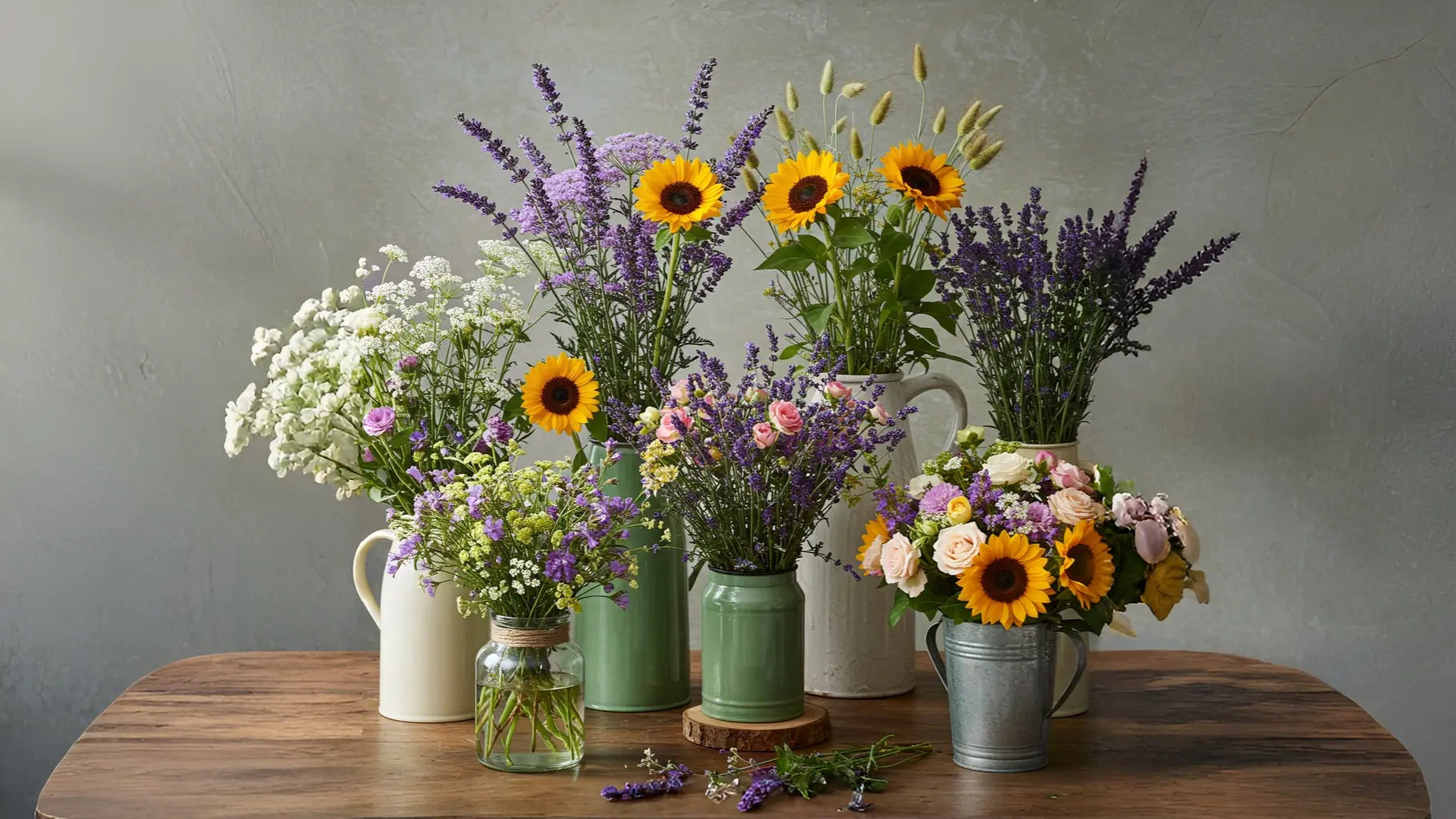Do your flowers feel more like an afterthought than a centerpiece? Just a handful of stems dropped in a vase, not quite living up to their potential? You’re in the right place to change that.
A flower arrangement shouldn’t just occupy space; it should be a living sculpture, the heart of a room, a backdrop for cozy mornings, elegant dinners, and cherished memories.
This is your creative playbook for transforming simple blooms into a feature that’s not only beautiful and fragrant but feels deeply, personally you.
We’ll explore stunning designs, decode the secrets of floral styling, and walk through the practical steps to bring it all to life.
By the end, you’ll see your flowers not as a temporary decoration, but as a medium for your artistry.
Before You Begin: The Secrets of a Stunning Arrangement
The most beautiful floral displays start with a little bit of know-how, not just a trip to the florist. Before you unwrap a single bouquet, let’s lay the groundwork for a design that will look professional and last for days.
The Secrets of Style: Simple Rules for a Flawless Look
Floral design sounds intimidating, but it’s really just about what makes an arrangement feel balanced and beautiful. Here are a few simple secrets:
- Prep Your Stems: The moment you get your flowers home, trim at least an inch off each stem at a 45-degree angle (this increases the surface area for water absorption). Immediately place them in a clean bucket of cool water with flower food. This step alone can double the life of your arrangement.
- Build Your Base (The Grid Method): For a wide-mouthed vase, create a grid across the opening with clear floral tape or even Scotch tape. This creates a structure that holds your stems exactly where you want them, preventing them from flopping to one side.
- The Floral Trinity (Thriller, Filler & Spiller): This is a designer’s foolproof recipe for a dynamic arrangement.
- Thrillers: Your big, show-stopping focal flowers (like roses, lilies, or peonies).
- Fillers: Smaller, texturally interesting blooms and greenery that fill in the gaps (like baby’s breath, waxflower, or eucalyptus).
- Spillers: Greenery or flowers that drape elegantly over the side of the vase (like ivy or amaranthus).
- The Rule of Odds: When creating groupings within your arrangement, your eye naturally finds clusters of 3, 5, or 7 more pleasing than even numbers.
- The 60-30-10 Color Secret (Floral Edition): This classic design rule works for bouquets, too! It ensures a balanced and professional-looking color palette.
- 60% is your main color or greenery. This is your base that sets the mood, often beautifully played by lush greens.
- 30% is your secondary color. These are your main flowers that complement the base and provide the primary visual interest.
- 10% is your accent color. This is your “wow” factora pop of a contrasting, vibrant color or a unique bloom that makes the whole arrangement sing.
- Let the Star Shine: Your floral arrangement is the main event. If you have a particularly stunning bloom (like a giant dahlia or a perfect peony), make it the hero. Don’t crowd it with too many other “star” flowers. Similarly, place your finished masterpiece where it can be the focal point, not competing with a loud piece of art right next to it.
What’s the Real Cost? A No-Fuss Budget Breakdown
| The Approach | Estimated Cost | What Your Money Buys | The Little Extras (Don’t Skip These!) |
| The Foraged & Found Bouquet | $0 – $20 | • Flowers from your garden<br>• Wildflowers & interesting weeds<br>• Recycled jars & bottles | • A good pair of clippers<br>• Twine or ribbon<br>• A bucket for conditioning |
| The Grocery Store Glow-Up | $25 – $60 | • 2-3 bunches of supermarket flowers<br>• A bunch of quality greenery like eucalyptus | • Flower food packets<br>• A nice classic vase<br>• Clear floral tape |
| The Florist-Worthy Splurge | $75 – $200+ | • Premium, special-order blooms (peonies, ranunculus, dahlias)<br>• Unique, textural greenery | • Wet floral foam<br>• A unique vessel or urn<br>• Floral wire & pins |
The Design Menu: Finding Your Signature Floral Style
Here are the ingredients for your perfect floral moment. Each one comes with a breakdown to help you create with confidence.
1. The Classic Vase Arrangement
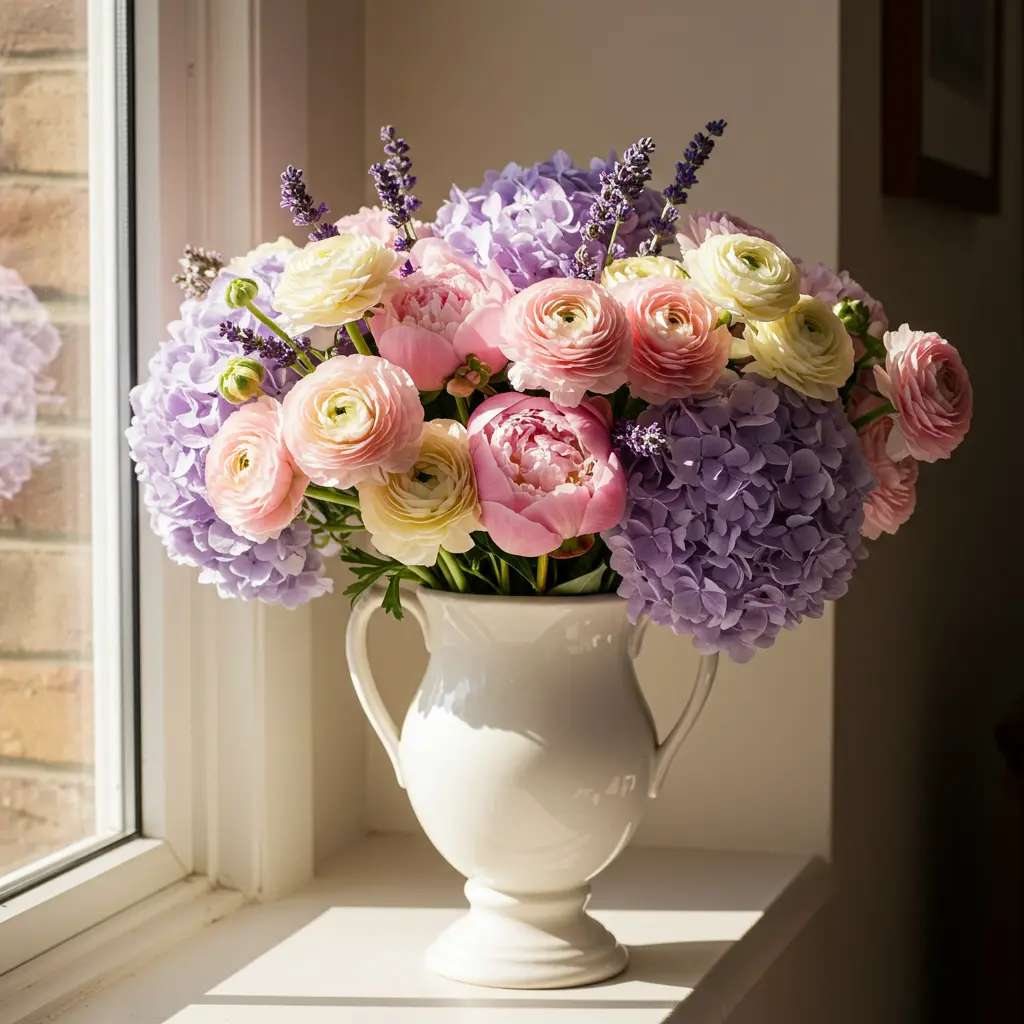
Best For: Timeless elegance, formal dining tables, and making a sophisticated statement.
- Key Materials: A tall, classic vase (glass or ceramic), focal flowers (like roses or hydrangeas), filler flowers, and elegant greenery.
- Pro-Tip: Start by creating a base of greenery using your tape grid. Then add your largest “thriller” flowers, turning the vase as you go. Finish by tucking in smaller “filler” flowers to fill any gaps.
- Styling Cue: The quintessential centerpiece for a dining room table or a statement piece on an entryway console.
2. Mason Jar Magic
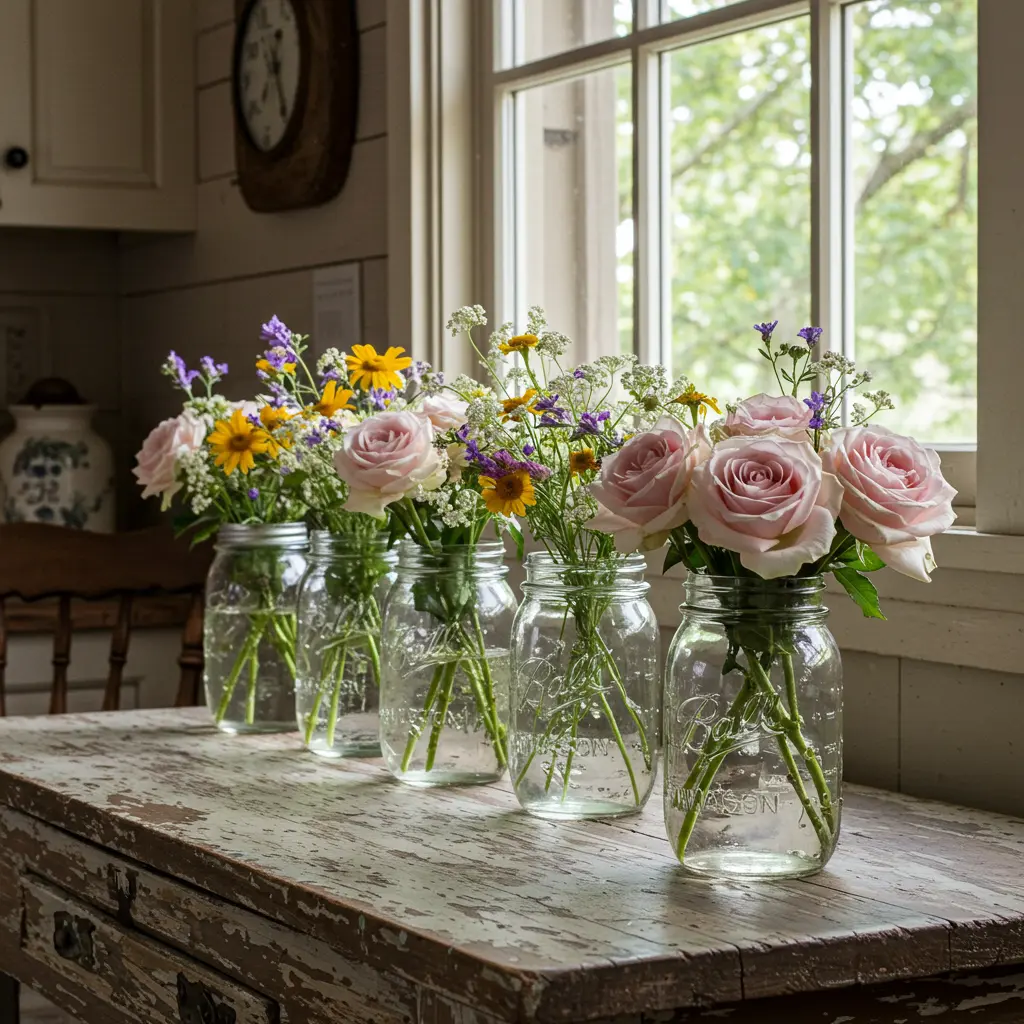
Best For: Rustic charm, kitchen counters, and creating a cozy, farmhouse feel.
- Key Materials: Mason jars, twine or ribbon, and informal, cheerful flowers like wildflowers, daisies, or zinnias.
- Pro-Tip: Don’t just use one jar. Group three mason jars of slightly different sizes together for a much more impactful and thoughtfully styled look.
- Styling Cue: Perfect for a kitchen island, a casual brunch tablescape, or lining a rustic windowsill.
3. Floating Blooms in Glass Bowls
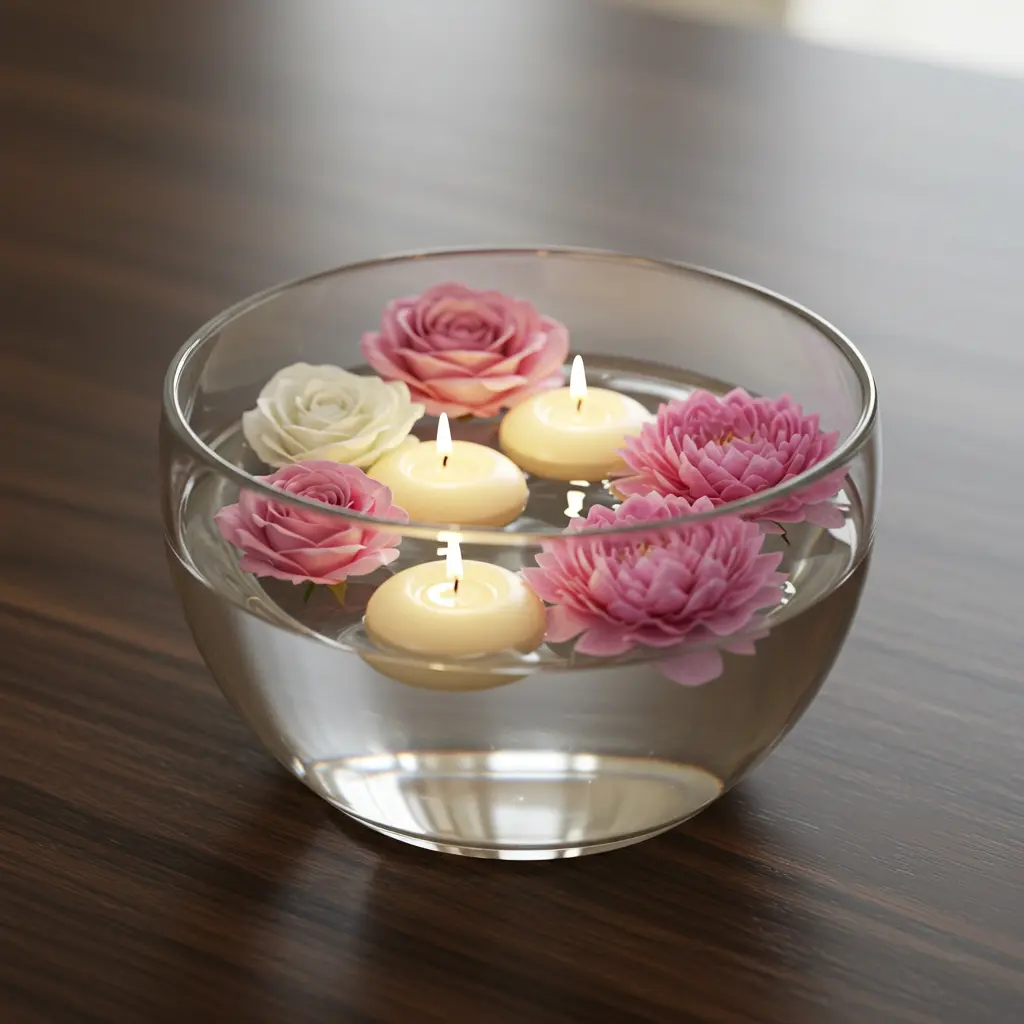
Best For: Minimalist decor, creating a spa-like atmosphere, or a simple yet elegant coffee table centerpiece.
- Key Materials: A wide, shallow glass bowl, and large-headed flowers with the stems cut very short (gardenias, peonies, chrysanthemums).
- Pro-Tip: To keep the water crystal clear for longer, add a tiny drop of bleach or a capful of vodka to the water. It inhibits bacterial growth.
- Styling Cue: An incredibly serene look for a bathroom counter, a modern coffee table, or a bedside table.
4. Hanging Flower Baskets
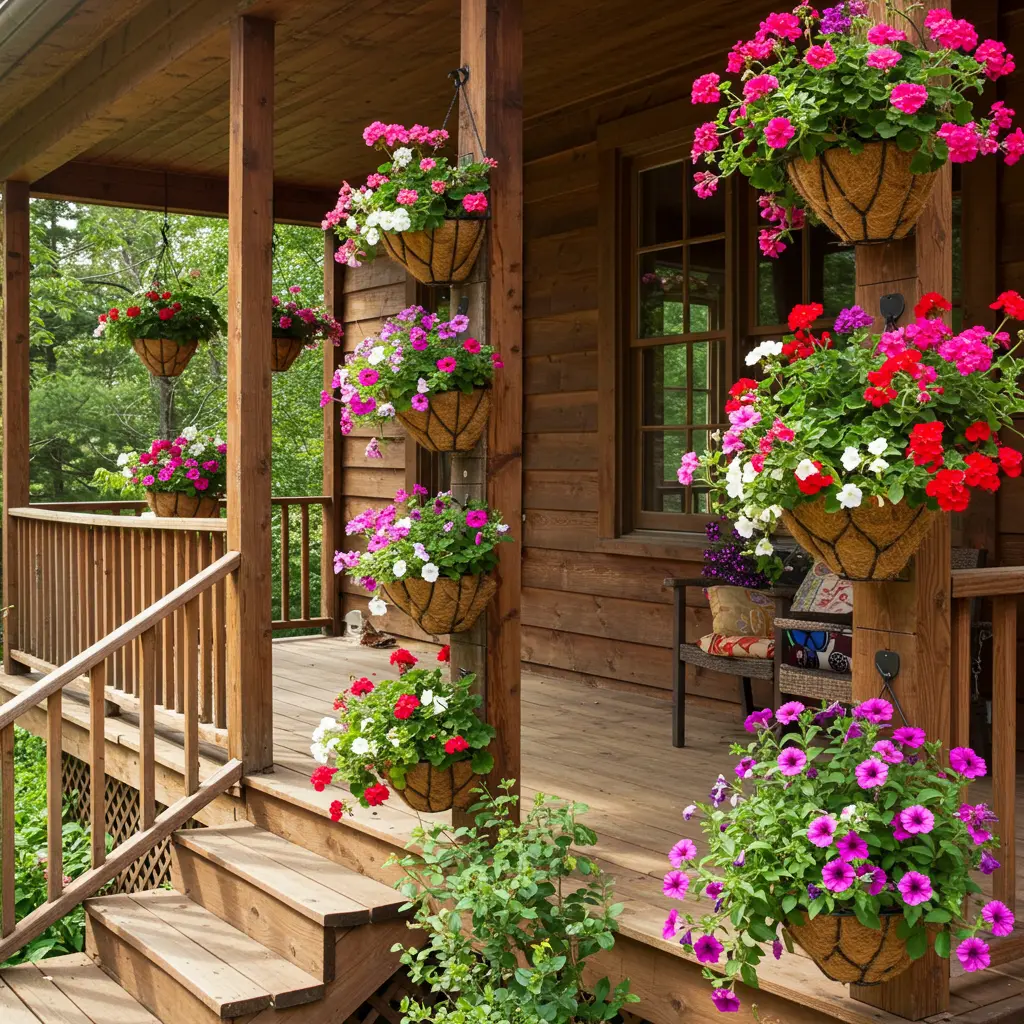
Best For: Adding vertical interest, decorating a front porch, and bringing life to empty corners.
- Key Materials: A wire or wicker hanging basket, a coco liner, potting soil, and trailing plants or flowers (like petunias, ivy, or fuchsia).
- Pro-Tip: For lush, all-day blooms, mix a handful of water-retaining crystals into your potting soil before planting. It will keep the soil moist on hot days.
- Styling Cue: The classic choice for flanking a front door, hanging from a pergola, or adding life to a balcony.
5. Teacup Flower Arrangements

Best For: A touch of vintage whimsy, small spaces, and creating adorable gifts or party favors.
- Key Materials: Mismatched vintage teacups, a small piece of wet floral foam, and dainty flowers (like spray roses, pansies, or baby’s breath).
- Pro-Tip: Cut a piece of wet floral foam to fit snugly inside the teacup. This will hold your tiny stems securely in place and keep them hydrated.
- Styling Cue: Absolutely charming on a tiered tray, a vanity table, or as individual place settings for a tea party.
6. The Single Stem Statement
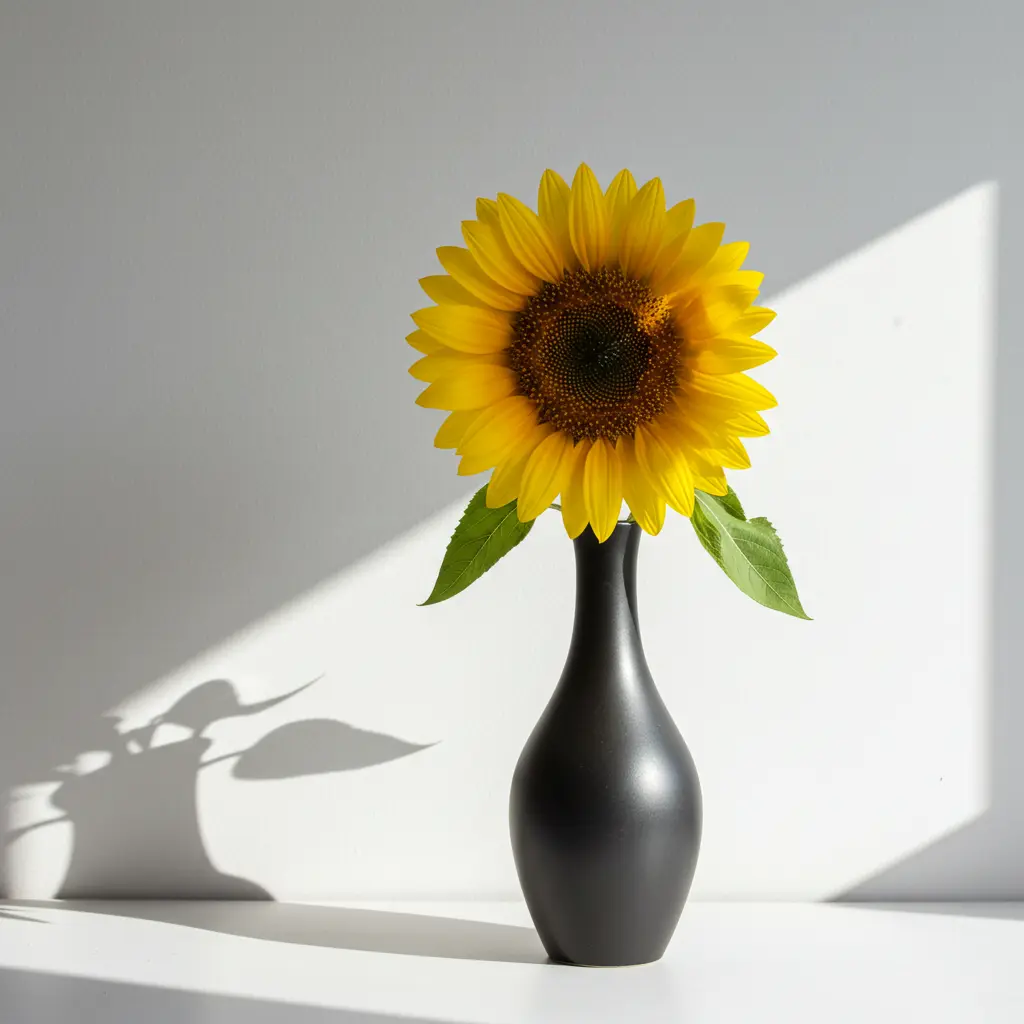
Best For: True minimalists, modern spaces, and highlighting the beauty of a single, perfect bloom.
- Key Materials: One architecturally interesting flower (like an allium, bird of paradise, or a single orchid stem) and a tall, slender “bud vase.”
- Pro-Tip: The vase is just as important as the flower. Choose a vessel with a unique shape or texture that complements the simplicity of the single stem.
- Styling Cue: A sophisticated and powerful statement on a minimalist mantelpiece, a sleek office desk, or a narrow entryway table.
7. Floral Wreaths for Every Season
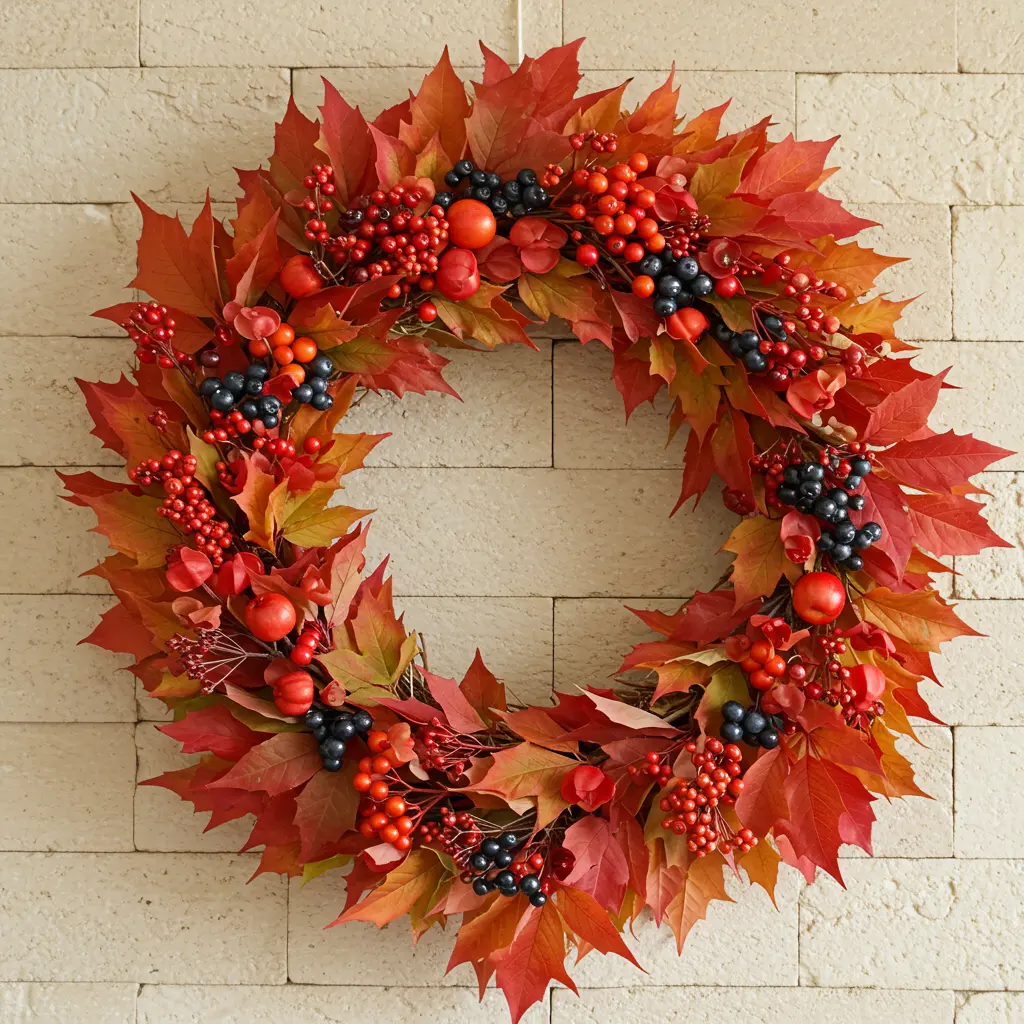
Best For: Welcoming guests, adding festive decor, and celebrating the changing seasons.
- Key Materials: A grapevine or wire wreath form, floral wire, and seasonal flowers (either fresh or high-quality faux).
- Pro-Tip: For a more modern, asymmetrical look, concentrate your flowers on only one-third of the wreath (usually the bottom left or right), leaving the rest of the beautiful grapevine exposed.
- Styling Cue: A stunning addition to your front door, hung over a mirror, or as a focal point above a fireplace.
8. Bottle Bouquets
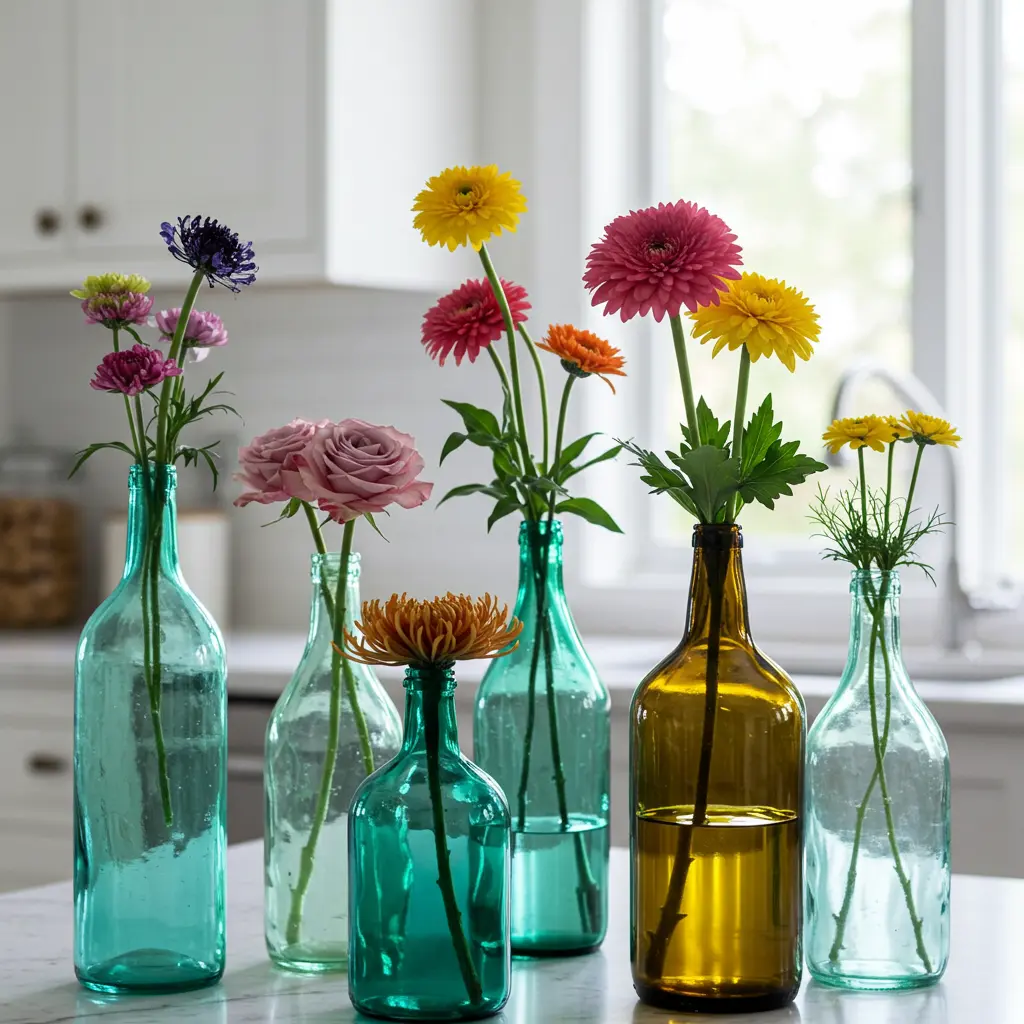
Best For: An eclectic, modern-boho look, recycling beautiful glass, and creating a dynamic grouping.
- Key Materials: A collection of interesting glass bottles (wine, soda, olive oil), each with a single stem or a small sprig of flowers.
- Pro-Tip: Vary the heights and shapes of your bottles but stick to a cohesive color palette (e.g., all green glass, all brown, all clear) for a look that feels intentionally curated, not random.
- Styling Cue: Group a cluster of bottle bouquets on a dining table, a mantel, or a long-and-low media console.
9. Farmhouse-Style Wooden Box Arrangement
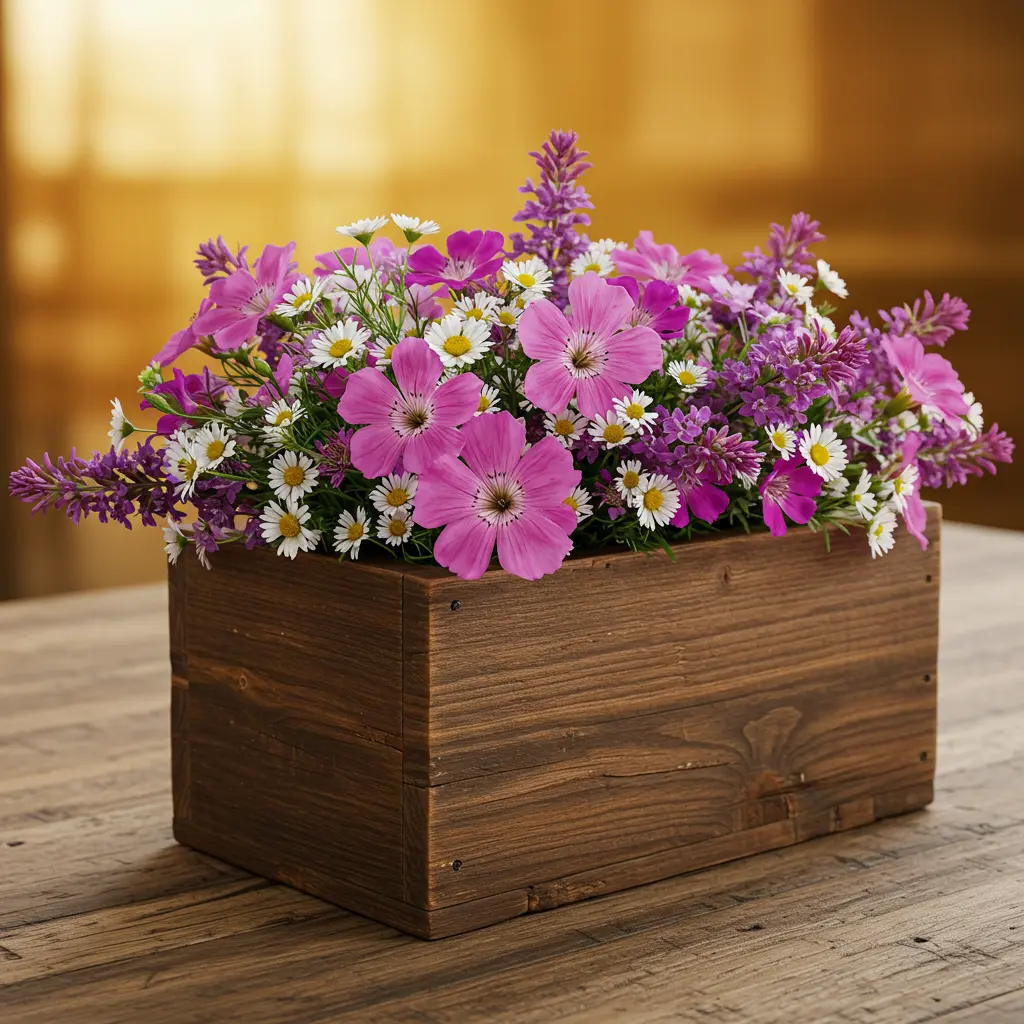
Best For: Creating a rustic, elongated centerpiece perfect for long dining tables.
- Key Materials: A long, low wooden box or planter, floral foam or small jars to line the inside, and a mix of garden-style flowers and greenery.
- Pro-Tip: Line the wooden box with a plastic painter’s tray or small glass jars to hold the water. This protects the wood and makes cleanup a breeze.
- Styling Cue: The absolute perfect centerpiece for a long, farmhouse-style dining table or a rustic wedding.
10. Terrarium-Style Flower Arrangements
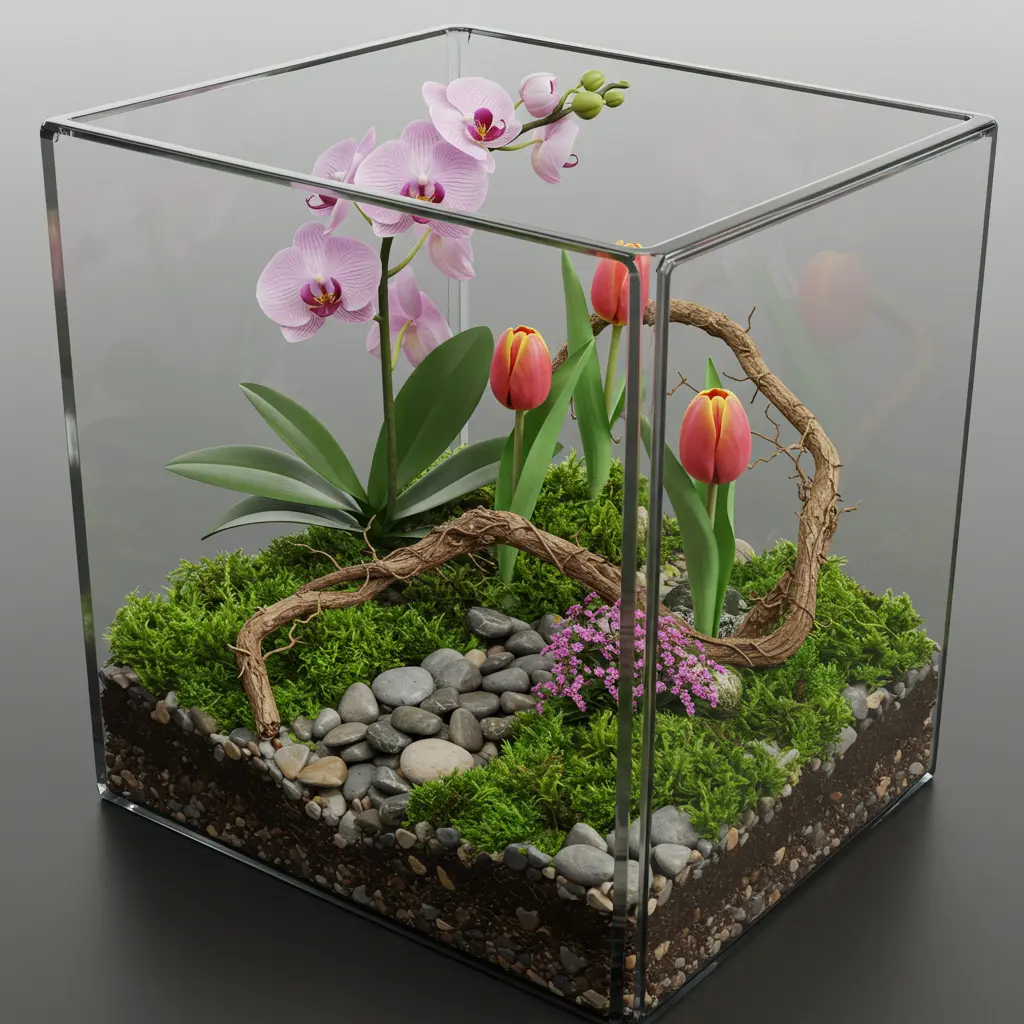
Best For: A modern, nature-inspired look that feels like a miniature world.
- Key Materials: An open glass terrarium, moss, small pebbles, and hardy flower heads or air plants (Tillandsia).
- Pro-Tip: This is less about a traditional water-based arrangement. Use flower heads with very short stems nestled into a bed of lush green moss for a look that lasts for days.
- Styling Cue: A fascinating piece for a bookshelf, coffee table, or office desk where you can admire it up close.
11. Hanging Test Tube Floral Displays
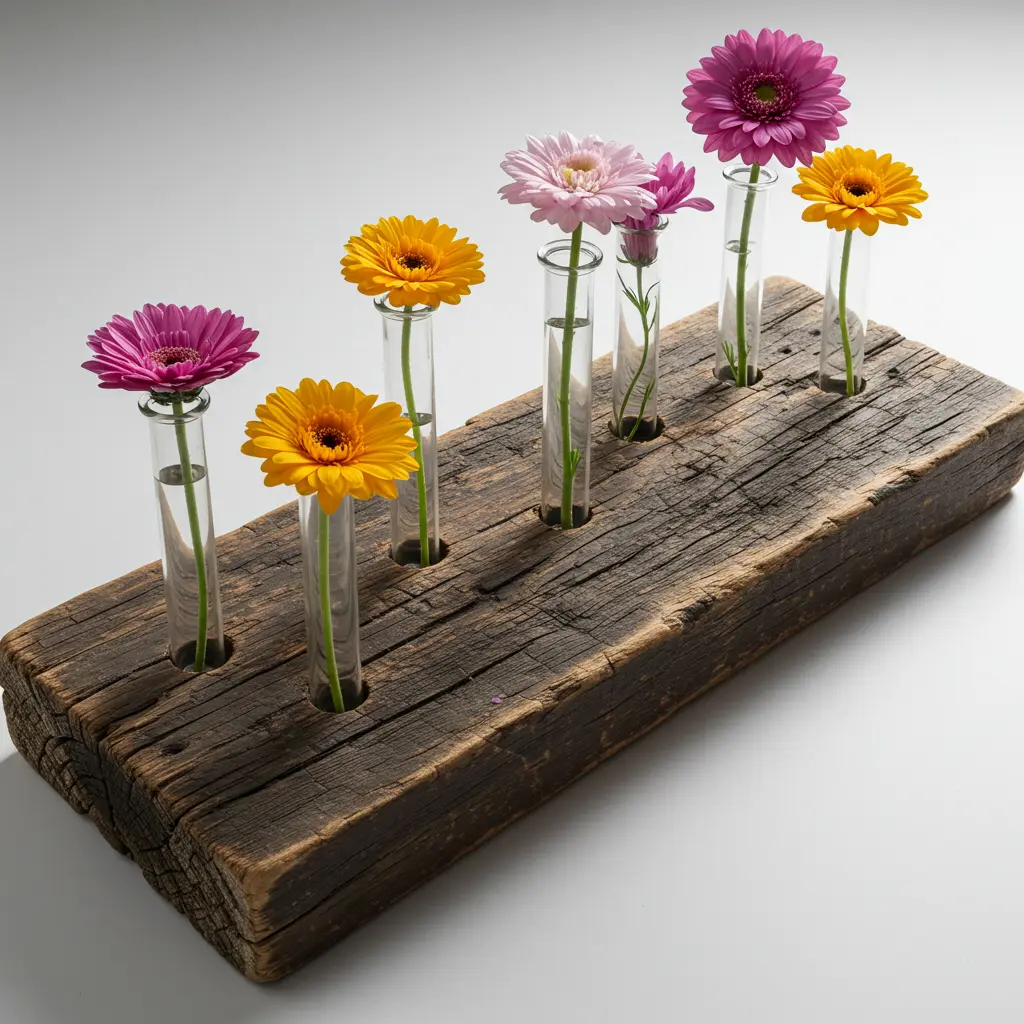
Best For: A unique, scientific-chic look for a minimalist wall.
- Key Materials: Glass test tubes, a piece of wood for mounting, and hardware to attach the tubes.
- Pro-Tip: Hang the finished wooden plank on the wall and fill each test tube with a single, delicate stem. For maximum impact, use different flowers in each tube but keep them all in the same color family.
- Styling Cue: An unexpected piece of living art for a gallery wall or a narrow wall in a hallway or kitchen.
12. Bouquet in a Watering Can
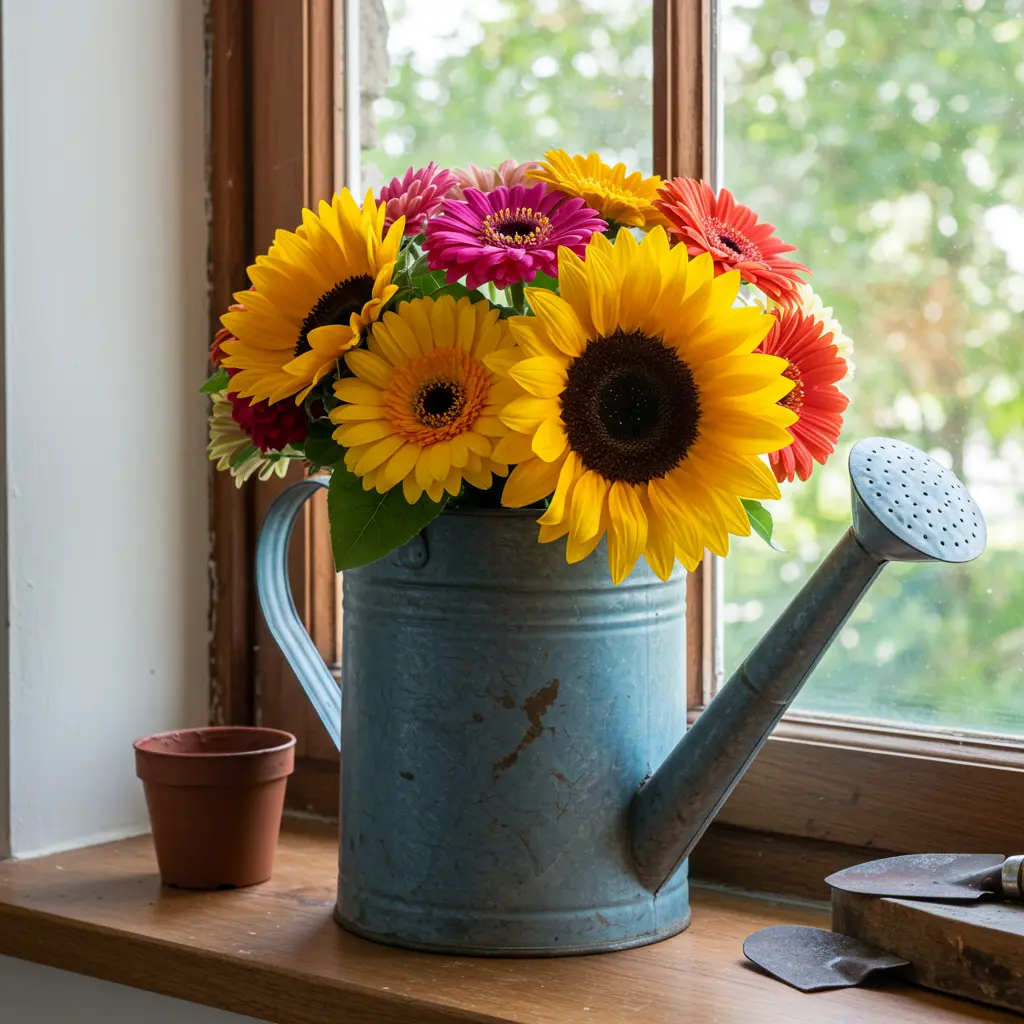
Best For: A charming, whimsical look that brings a touch of the English garden indoors.
- Key Materials: A vintage metal watering can and a large, unruly bunch of garden flowers like hydrangeas, delphiniums, and snapdragons.
- Pro-Tip: The beauty of this look is its casual, “just-picked-from-the-garden” feel. Don’t arrange it too perfectly. Let the stems crisscross and fall naturally.
- Styling Cue: Perfect for a front porch, a sunroom, or next to a fireplace for a dose of cottage charm.
13. Dried Flower Arrangements
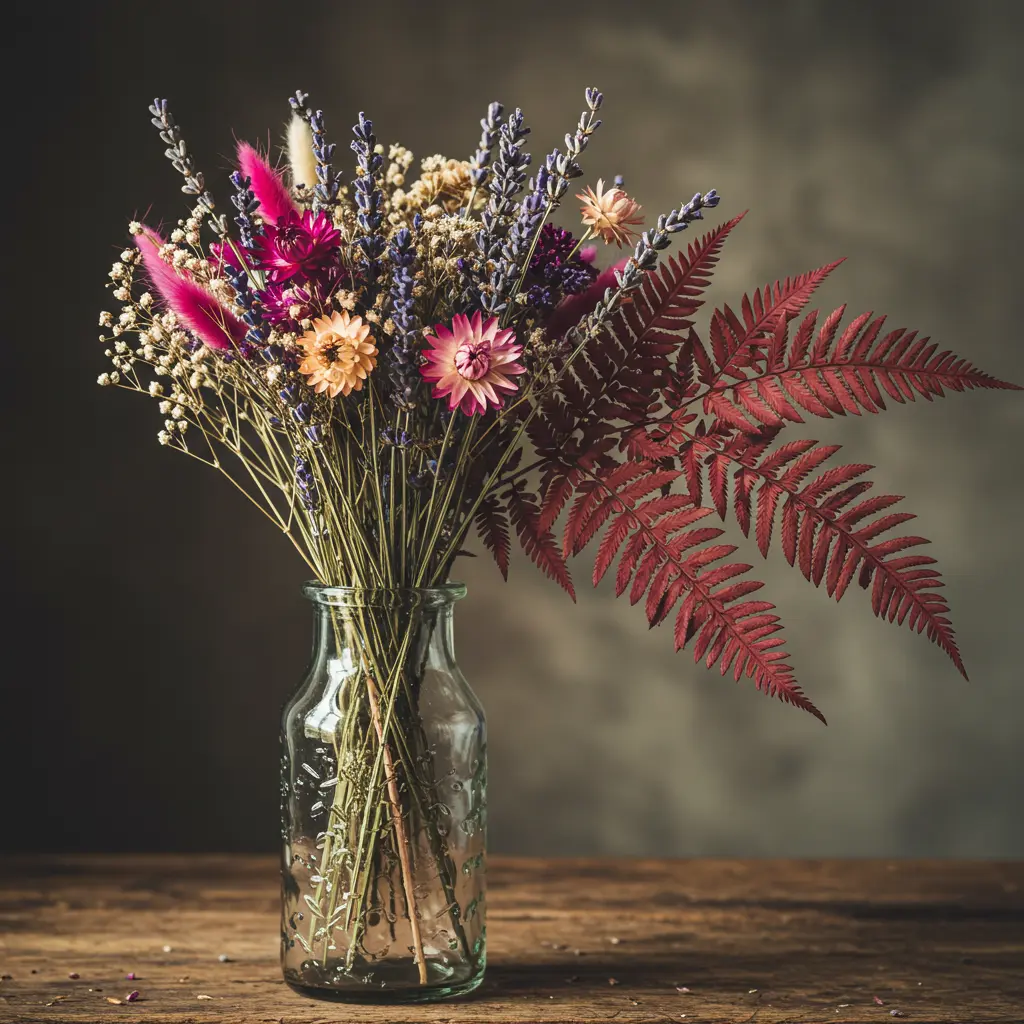
Best For: Low-maintenance, long-lasting beauty with a vintage, bohemian vibe.
- Key Materials: Dried flowers and grasses like pampas grass, bunny tails, lavender, and preserved eucalyptus. A ceramic or opaque vase (no water needed!).
- Pro-Tip: Dried flowers are brittle. Arrange them carefully and then give them a light mist of unscented hairspray from a distance. This helps “set” them and reduces shedding.
- Styling Cue: Adds incredible texture and a timeless feel to a bedroom dresser, a living room side table, or a bookshelf.
14. A Basket Full of Blooms
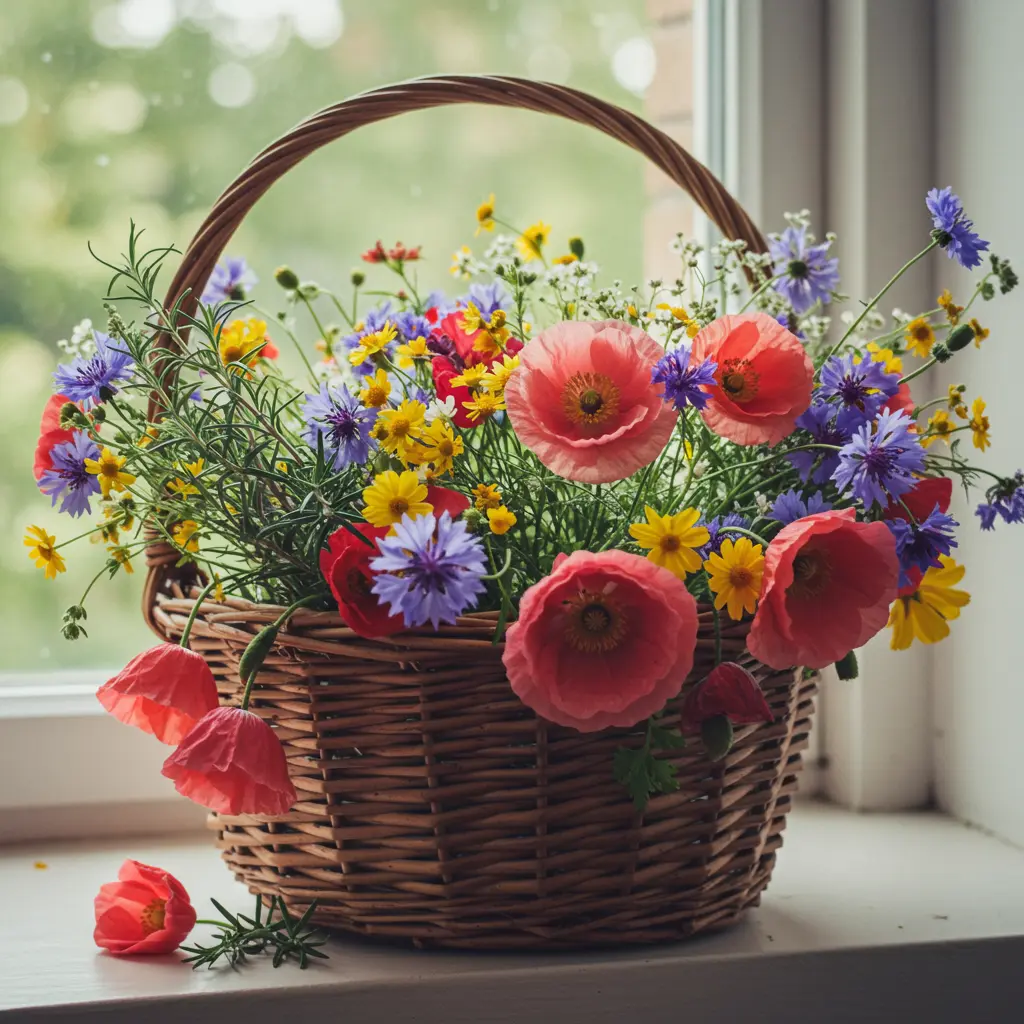
Best For: A casual, relaxed style that feels abundant and effortlessly chic.
- Key Materials: A beautiful wicker or woven basket, a plastic liner or glass vase to hide inside, and a profusion of flowers.
- Pro-Tip: Place a vase or watertight container inside the basket to hold your water and flowers. Then, use loose greenery and blooms to spill over the sides, completely hiding the container for a seamless look.
- Styling Cue: A beautiful floor arrangement for an entryway, or a stunning centerpiece for a round kitchen table.
15. Ombre Flower Arrangements

Best For: A dramatic, high-impact design that looks incredibly professional.
- Key Materials: Flowers in at least three different shades of the same color (e.g., white, light pink, and deep pink roses).
- Pro-Tip: The key is to sort all your flowers by color before you start arranging. Create distinct color blocks or a smooth gradient, starting with the lightest shade at one end and transitioning to the darkest at the other.
- Styling Cue: A show-stopping centerpiece for a special occasion, a buffet table, or a modern console.
16. Mini Succulent and Flower Mix
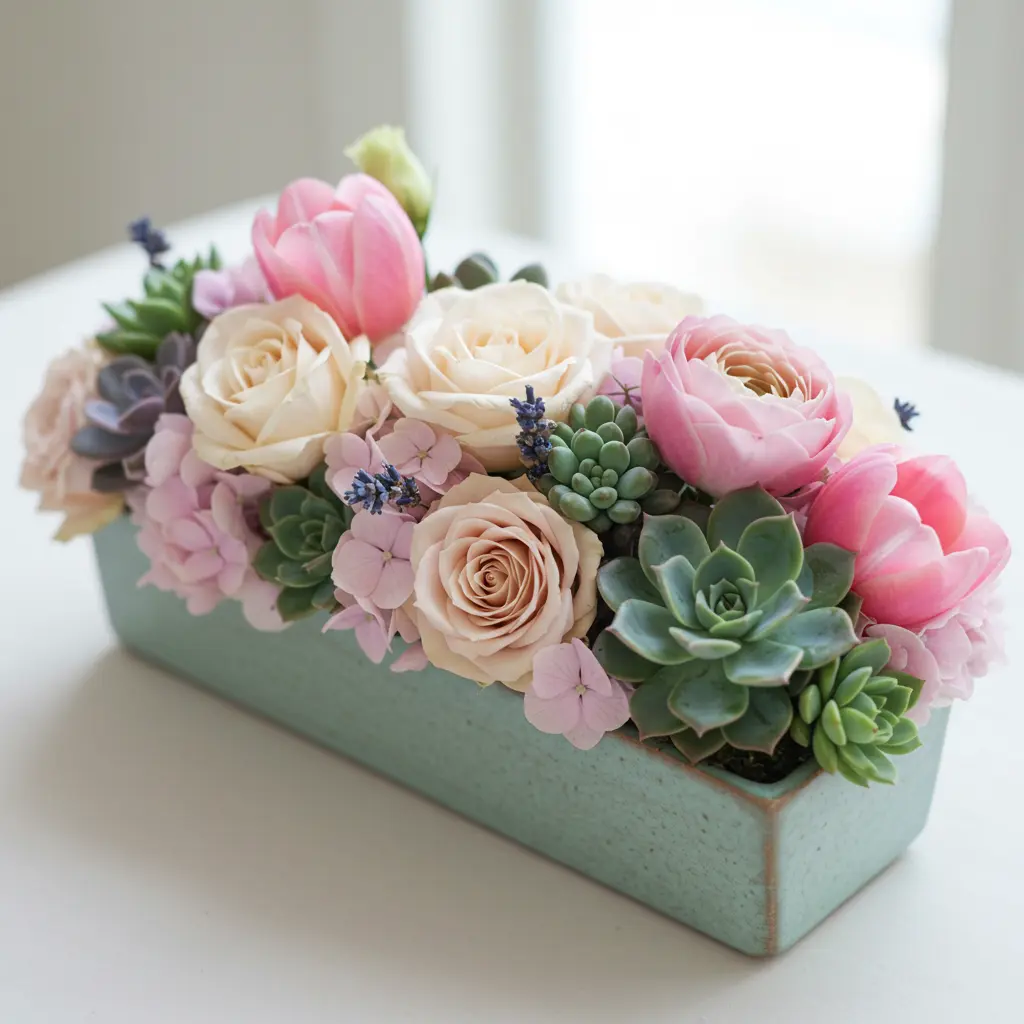
Best For: A modern, textural arrangement that offers unexpected longevity.
- Key Materials: A shallow bowl or dish, small succulents, and a few hardy flower heads (like craspedia or thistle).
- Pro-Tip: Plant the succulents in cactus soil in the dish first. Then, insert the fresh flower stems into small, hidden floral water picks pushed into the soil. The succulents will live on long after the flowers have faded.
- Styling Cue: A long-lasting and contemporary piece for a coffee table or a sunny windowsill.
17. Chandeliers with Hanging Flowers
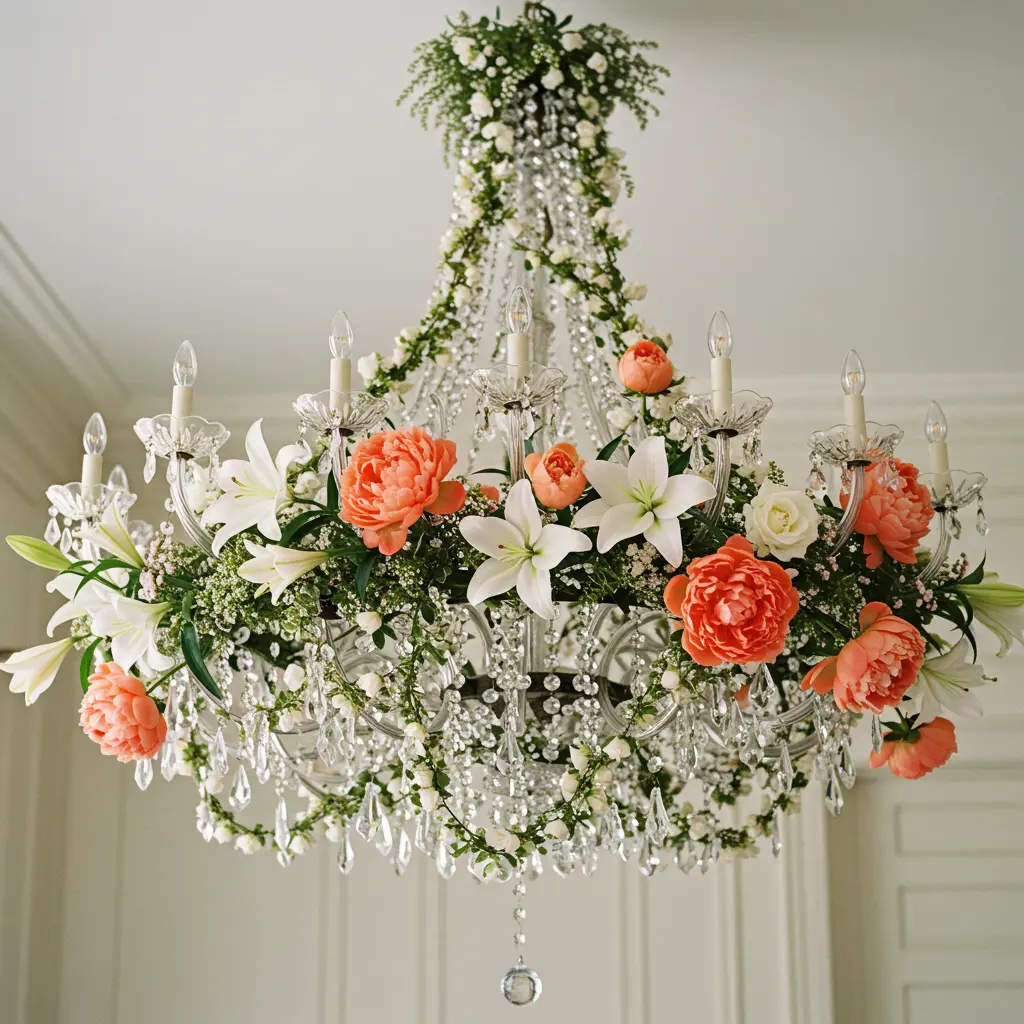
Best For: Creating a breathtaking, fairytale atmosphere for a special event or a romantic dinner.
- Key Materials: A chandelier, lightweight greenery (like smilax or Italian ruscus), and flowers with sturdy stems, plus fine floral wire.
- Pro-Tip: Use high-quality faux flowers and greenery for this. It will be much lighter, won’t wilt under the heat of lightbulbs, and requires no water source.
- Styling Cue: The ultimate wow-factor for a dining room, an event space, or a wedding.
18. Monochrome Flower Arrangements
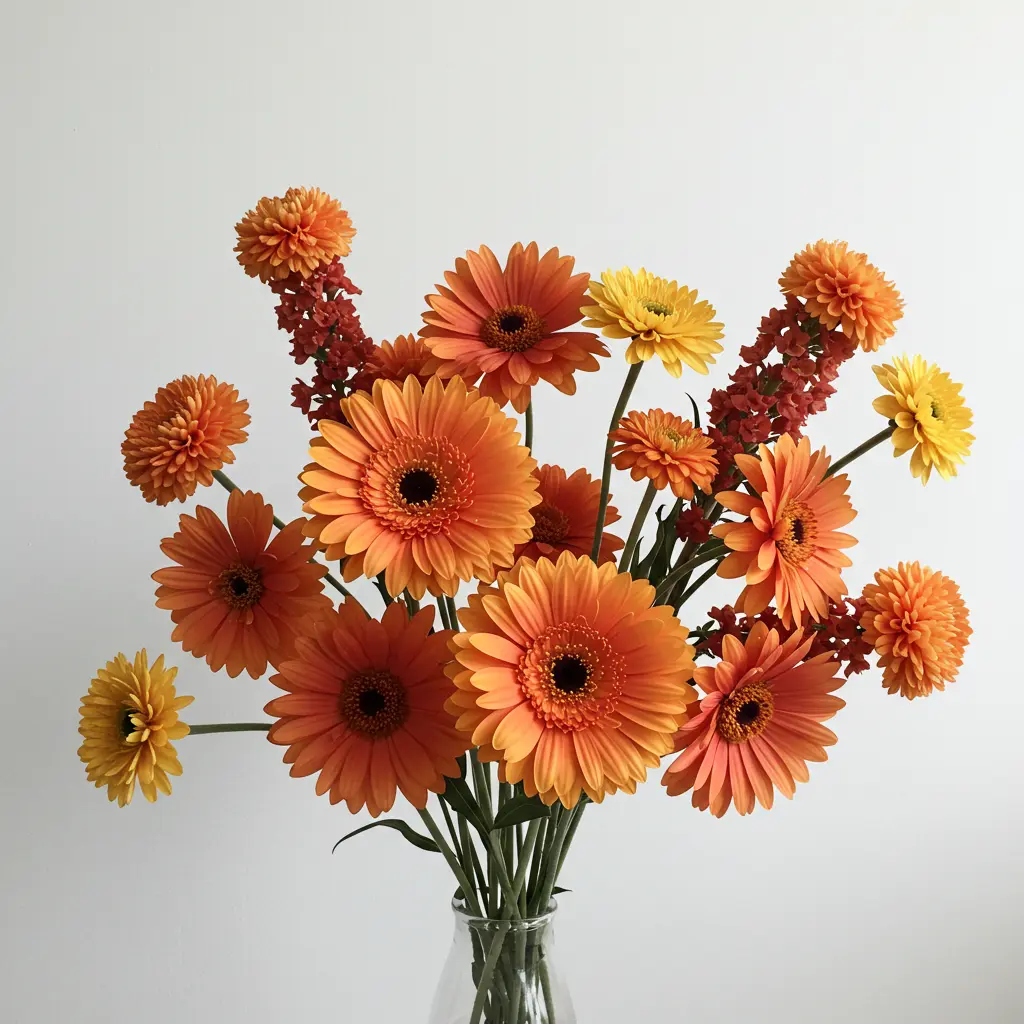
Best For: A sophisticated, bold, and incredibly chic statement.
- Key Materials: A variety of different flowers and greenery, all in the exact same color (e.g., all white, all green).
- Pro-Tip: The secret to a successful monochrome arrangement is texture. Mix flowers with different shapes and sizes a big fluffy hydrangea, a spiky thistle, a smooth tulip, and delicate greenery, all in the same hue for a rich, dynamic look.
- Styling Cue: An elegant, high-fashion look that works in any room and complements any decor style.
19. Pressed Flower Frames
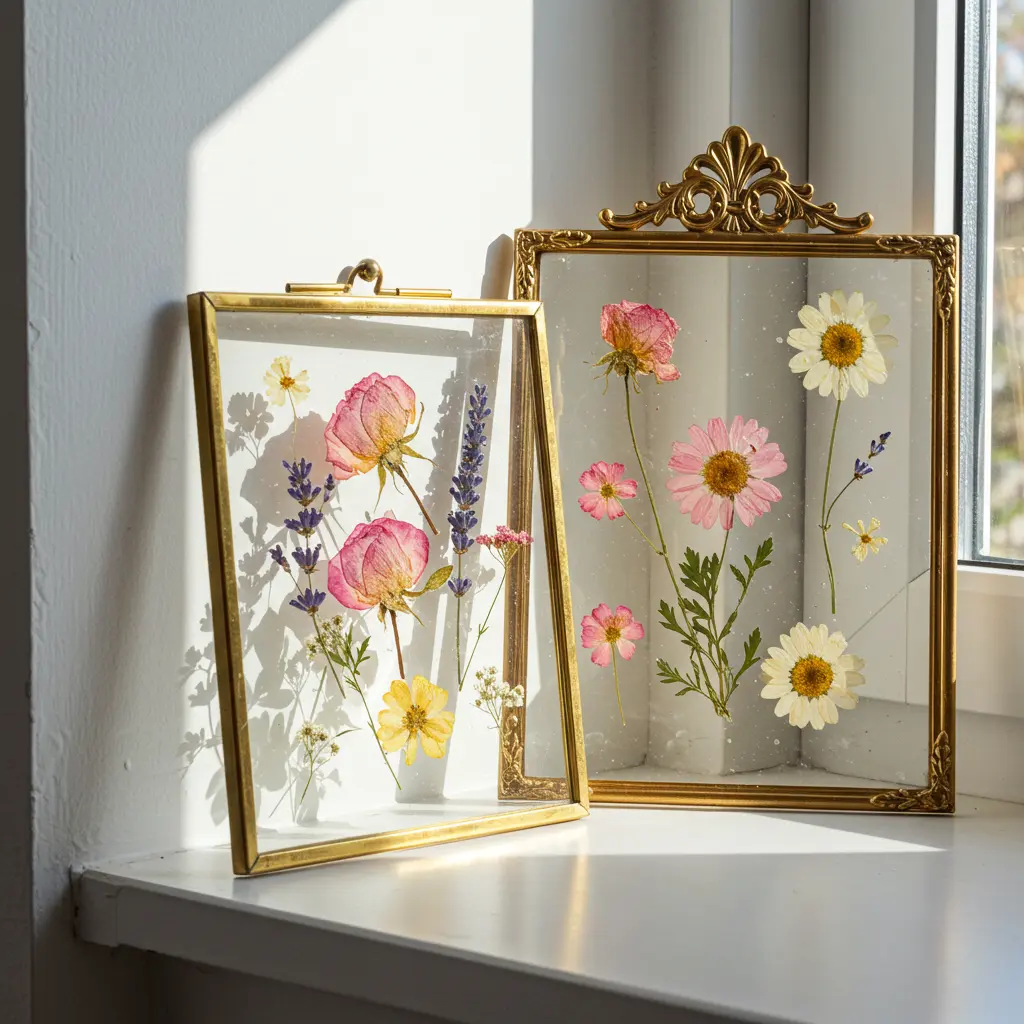
Best For: Preserving sentimental blooms (from a wedding, a special gift) and creating delicate, lasting art.
- Key Materials: Flowers, heavy books or a flower press, parchment paper, and a floating glass frame.
- Pro-Tip: For the best results, press flowers as soon as possible, when they are fresh but not damp. Place them between two sheets of parchment paper inside a heavy book and forget about them for 2-4 weeks.
- Styling Cue: Create a gallery wall of several small frames, or hang a single large one in a spot with soft, indirect light to prevent the colors from fading.
20. Seasonal Fruit and Flower Pairings
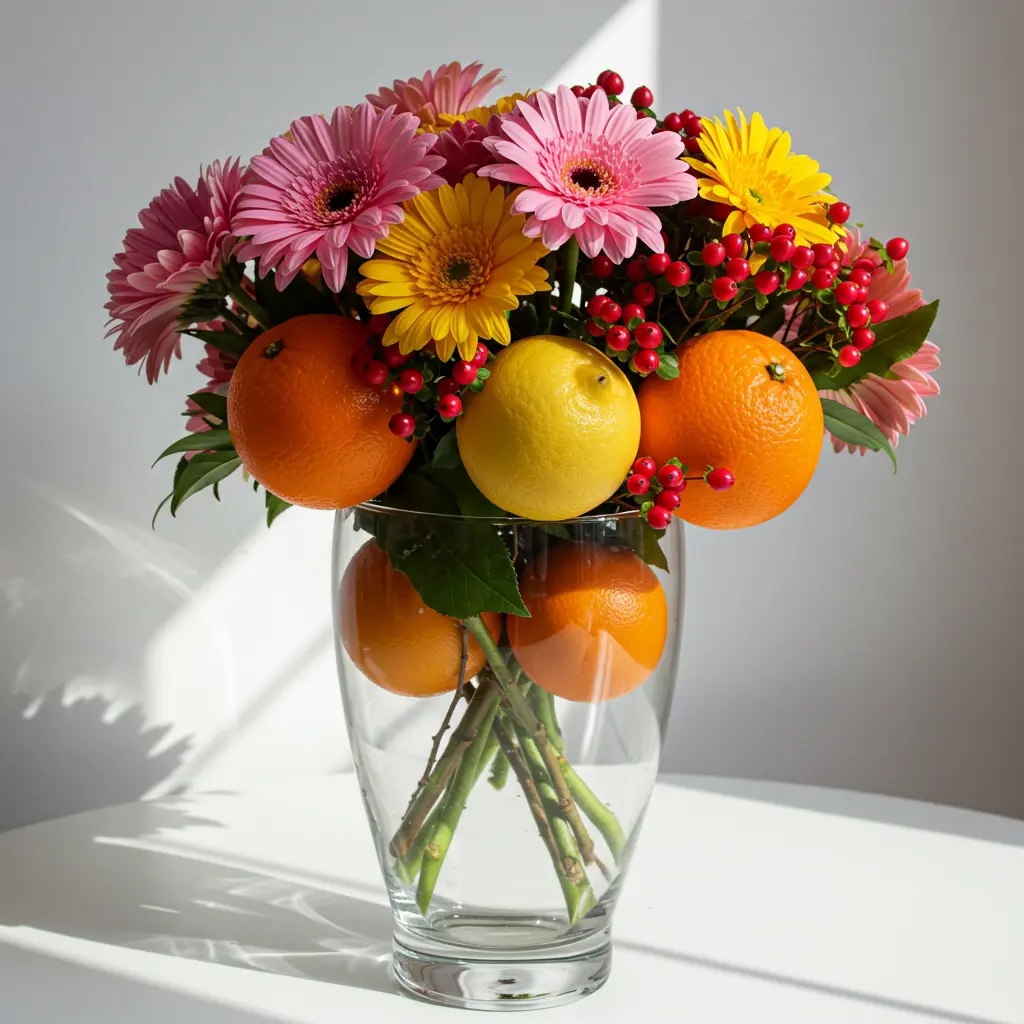
Best For: Adding an unexpected pop of color, texture, and a touch of the French countryside.
- Key Materials: A large, clear glass vase, whole citrus fruits (lemons, limes, clementines), and complementary colored flowers.
-
- Pro-Tip: Place a smaller, narrower vase inside the larger vase. Fill the gap between the two vases with your whole fruit. Then, fill the inner vase with water and your flowers. This keeps the water clean and the fruit perfectly visible.
- Styling Cue: A vibrant and cheerful centerpiece for a kitchen or dining table that screams “summer.”
Conclusion: Let Your Home Blossom
And just like that, you’re no longer just looking at a bunch of flowers you’re looking at a world of creative possibilities. You have the ideas, the inspiration, and the know-how to create floral arrangements that are beautiful, personal, and a true reflection of your style. This isn’t just about decorating a room; it’s about bringing life, art, and joy into your home.
It all starts with a single choice. Pick an idea that made your heart skip a beat, gather your favorite blooms, and take the first small step.
You’ve got this.
